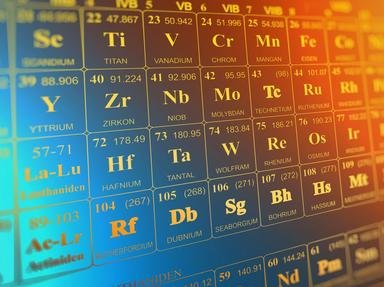
Novice Periodic Table of the Elements Quiz
These are questions on element symbols, atomic numbers, and more! This quiz is also on elements that do not go beyond argon, element 18. I hope you enjoy it.
A multiple-choice quiz
by CouthSKYRIM555.
Estimated time: 3 mins.
- Home
- »
- Quizzes
- »
- Science Trivia
- »
- Chemistry
- »
- Periodic Table
